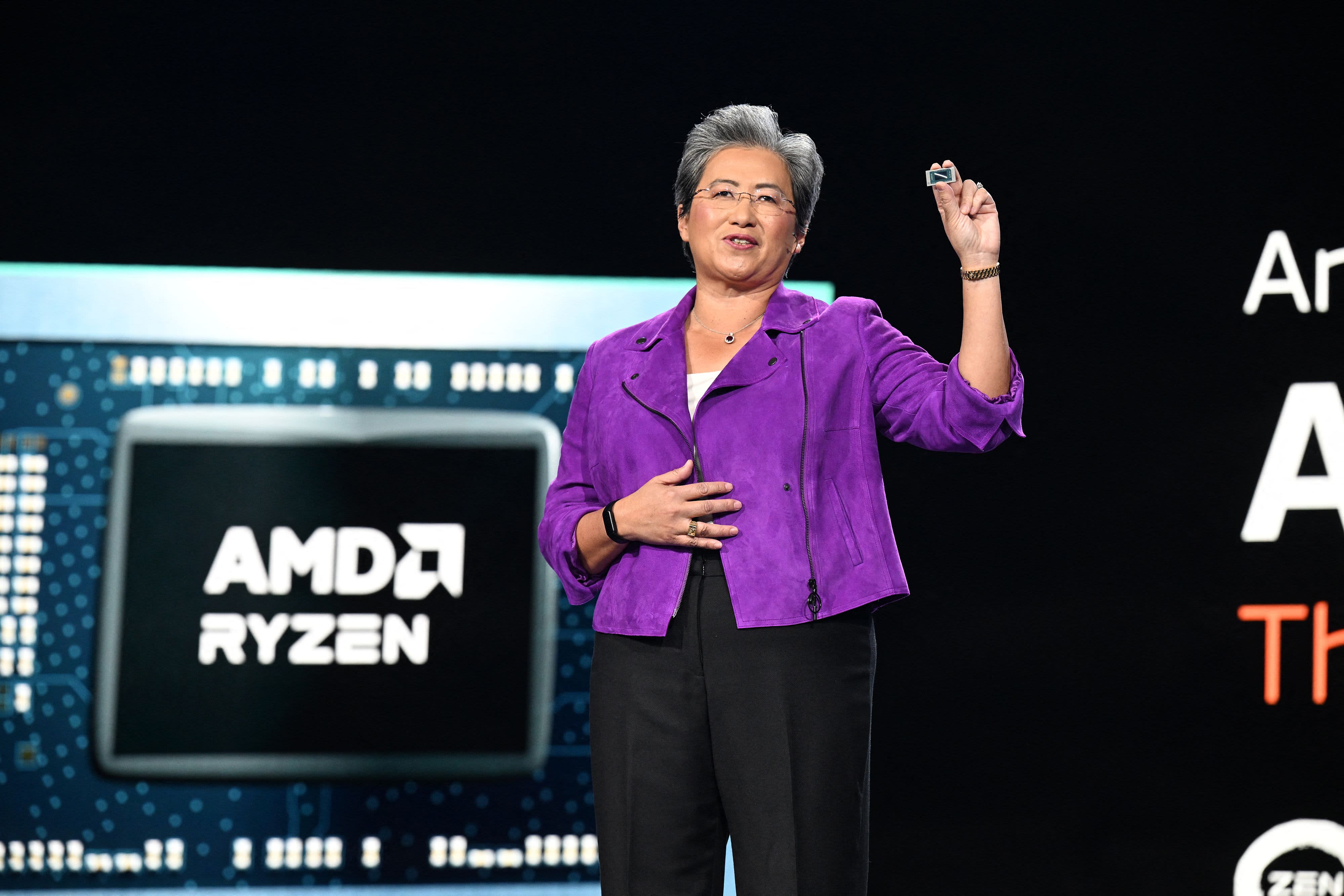AMD and Intel are fierce competitors in a difficult market for chips, but one has a much brighter short-term outlook than the other. While Intel is expecting declines across the board, AMD’s data center business is growing with the introduction of a new chip, and its pandemic-era acquisition of specialty chip-maker Xilinx is also contributing growth.
On Tuesday, AMD said it expected $5.3 billion in sales in the March quarter, which would be a 10% year-over-year decline in sales.
related investing news
That’s not a rosy outlook, but it’s much stronger than Intel’s guide for the March quarter. Last week, Intel said it expected about $11 billion in sales, which would be a 40% year-over-year decline.
Neither chipmaker gave full-year guidance, citing economic uncertainty. “We want to be cautious obviously heading into the year just given the macro environment,” AMD CEO Lisa Su told analysts on the company’s earnings call.
But the stock market is reflecting how the two companies are diverging.
After Intel’s report last week, it fell over 7% in extended trading. AMD rose under 2% after its earnings report on Tuesday.
Both companies are facing a slump in PC market, after two years of elevated sales during the Covid pandemic, as people bought new computers to work or go to school from home.
AMD’s PC chip group revenue declined 51% on a year-over-year basis in the fourth quarter. Intel’s declined 36%, but from a larger base. Overall, AMD CEO Lisa Su said on Tuesday that it expects the total PC market to be down 10% in 2023, but said that AMD actually gained market share in the fourth quarter.
“It’s fair to say that we believe given where we are with the client inventory levels, the first half will certainly be lower. We expect some improvement in the second half,” Su said.
The companies diverge more dramatically when it comes to data center chips.
Sales for Intel’s datacenter group fell 33% from the previous year to $4.3 billion, partially because of a late release of its latest server chip family, Sapphire Rapids.
AMD’s data center business is growing strongly, however, up 42% on an annual basis to $1.7 billion. AMD released its latest data center chips, the fourth-generation Epyc processors, in November. AMD expects its data center business to grow this year while PC chips and graphics processors for gaming decline.
AMD’s data center business faces tough macroeconomic conditions too, but on Tuesday, Su signaled to investors that its gains would come at Intel’s expense.
“In our Embedded and Data Center segments, we believe we are well positioned to grow revenue and gain share in 2023 based on the strength of our competitive positioning and leadership,” Su said.
AMD also had success with its 2020 acquisition of Xilinx, which it bought for $35 billion. Xilinx, which makes processors that perform specialized tasks like encryption or video compression, was the main contributor to $1.4 billion in sales for AMD’s embedded division, an annual increase of 1,868%, according to the company.





